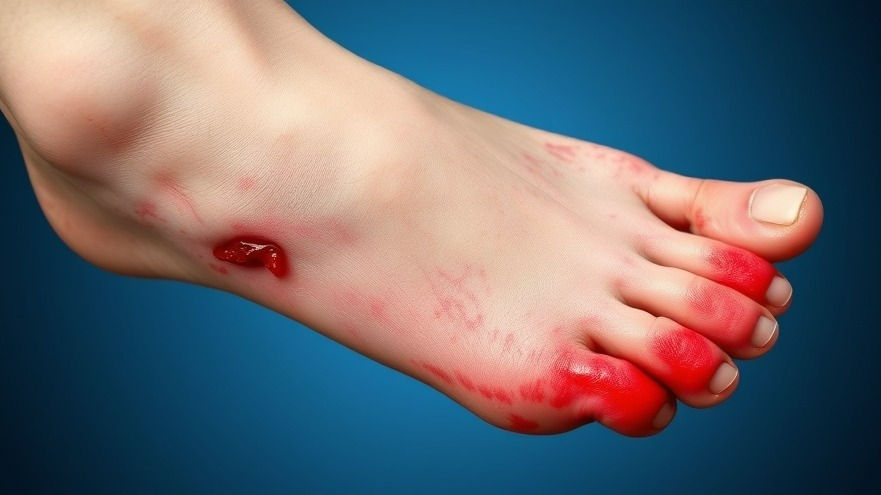
Understanding Cellulitis: A Common Skin Infection
Cellulitis, a skin infection primarily caused by Staphylococcus or Streptococcus bacteria, often makes its unwelcome appearance on the lower leg. It occurs when these bacteria penetrate the skin through cuts or minor wounds. Though common, awareness of the infection's symptoms and the recovery timeline is crucial for both patients and healthcare providers.
Symptoms and Signs of Cellulitis
Recognizing cellulitis early can help ensure timely treatment. Symptoms typically include a painful red rash, swelling, and warmth in the affected area. On lighter skin, the rash appears red, while it may manifest as dark purple on darker skin tones. These visible signs served as critical indicators for medical professionals in diagnosing and discussing treatment options.
How Long Does It Take to Heal?
Recent studies, including insights from Dr. Arash Mostaghimi, shed light on the healing process. After patients begin antibiotic treatment, they may notice significant improvement within a few days. However, the skin may continue to feel swollen and warm even after ten days. This lingering effect can confuse patients, leading them to question the effectiveness of their treatment. Understanding the healing stages can alleviate such concerns.
The Healing Process: Dual Stages Explained
The healing process consists of two integral stages. First, the antibiotics and your immune system work together to target and eliminate the infection. The second, and often more prolonged, phase involves your body’s immune response gradually winding down. Residual symptoms during this time do not indicate treatment failure; instead, they are a natural part of recovery.
Why This Knowledge Matters for Your Practice
For concierge medical practice owners, understanding the intricacies of conditions like cellulitis empowers you to communicate effectively with your patients. By educating them about what to expect during the recovery timeline, you can enhance patient satisfaction and build stronger relationships. This approach aligns with wellness principles, reinforcing the message that being informed leads to better health outcomes.
Conclusion: Foster Informed Patient Relationships
As you elevate your practice, ensure your communication incorporates empathetic discussions around common health issues like cellulitis. Equip your patients with knowledge regarding their conditions, helping them navigate their recovery with clarity. Consider hosting informative sessions or providing resources that explain common skin infections—insights that foster stronger ties and community trust.
 Add Row
Add Row  Add
Add 




Write A Comment